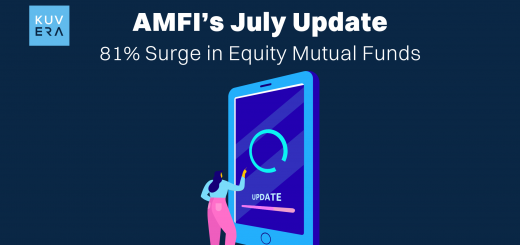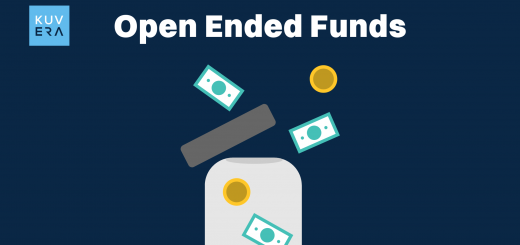India has set ambitious infrastructure targets to bolster economic growth and development. The government has allocated ₹11.11 lakh crore towards capital expenditure, marking an increase of over five times in the last decade. This surge in capital expenditure aims to enhance public digital infrastructure, clean and renewable energy projects, and resilient urban infrastructure. (KPMG, EY)
Investing in India’s infrastructure through mutual funds offers a strategic avenue to capitalize on the nation’s robust development initiatives. Infrastructure-focused mutual funds concentrate investments in sectors such as transportation, energy, and urban development, aligning with India’s ambitious infrastructure goals.
Thematic and Sectoral Funds Investing in Infrastructure
Thematic and sectoral mutual funds are designed to invest in specific industries or themes. In the context of infrastructure, these funds target companies involved in building and maintaining infrastructure projects. They typically invest in sectors like construction, engineering, power, and transportation. Let us see some important infrastructural funds investing in the theme and sector-specific domains:
Top 10 Infrastructure Funds with 1-year Return
| S. No. | Name of the Fund | 1 Yr return (%) | TER (%) | Fund House |
|---|---|---|---|---|
| 1 | LIC MF Infrastructure Growth Direct Plan | 51.61 | 1.06 | LIC Mutual Fund |
| 2 | Bandhan Infrastructure Growth Direct Plan | 42.63 | 0.82 | Bandhan Mutual Fund |
| 3 | Canara Robeco Infrastructure Growth Direct Plan | 38.19 | 1.03 | Canara Robeco Mutual Fund |
| 4 | Invesco India Infrastructure Growth Direct Plan | 37.59 | 0.74 | Invesco Mutual Fund |
| 5 | Kotak Infrastructure & Economic Reform Growth Direct Plan | 36.29 | 0.62 | Kotak Mahindra Mutual Fund |
| 6 | L&T Infrastructure Growth Direct Plan | 30.78 | 0.97 | L&T Finance |
| 7 | HSBC Infrastructure Growth Direct Plan | 30.78 | 0.97 | HSBC Mutual Fund |
| 8 | ICICI Prudential Infrastructure Growth Direct Plan | 30.25 | 1.21 | ICICI Prudential Mutual Fund |
| 9 | Bank Of India Manufacturing & Infrastructure Growth Direct Plan | 29.82 | 0.75 | Bank of India Mutual Fund |
| 10 | Quant Infrastructure Growth Direct Plan | 26.38 | 0.66 | Quant Multi Asset Multi-Manager |
Source: Kuvera; December 29, 2024
The data on the top 10 infrastructure mutual funds shows strong 1-year returns, with LIC MF Infrastructure Growth Direct Plan leading at 51.61%. Other top performers include Bandhan (42.63%) and Canara Robeco (38.19%), indicating significant growth in the infrastructure sector. These funds offer attractive returns driven by investments in key sectors like construction, energy, and utilities. The expense ratios (TER) vary from 0.62% to 1.21%, with lower fees enhancing overall returns, as seen with Kotak Mahindra’s fund (36.29% return and 0.62% TER). Overall, infrastructure funds provide solid growth potential, diversification, and cost-effective options, making them an essential component of a well-rounded investment strategy.
The provided list of infrastructure mutual funds can be divided into thematic and sectoral categories. The thematic fund, such as Kotak Infrastructure & Economic Reform Growth Direct Plan, combines infrastructure investments with broader economic reforms, offering diversified exposure to multiple growth drivers. On the other hand, sectoral funds, like LIC MF Infrastructure Growth Direct Plan and Bandhan Infrastructure Growth Direct Plan, focus solely on the infrastructure sector, providing more targeted exposure with the potential for higher returns during periods of sectoral growth. Thematic funds offer broader, more diversified growth, while sectoral funds allow investors to capitalize on specific sectoral opportunities, albeit with potentially higher risk and reward.
Importance of Infrastructure Mutual Funds
1. Growth Potential
Infrastructure projects are often long-term investments that benefit from government policies, urbanization, and increasing demand for development in sectors like transportation, utilities, and energy. The returns seen in these funds indicate that infrastructure as a sector continues to thrive, offering investors substantial growth opportunities.
2. Diversification
Infrastructure mutual funds provide a diversified exposure to the infrastructure sector, allowing investors to gain from the performance of various sub-sectors, including power, roads, construction, and utilities. For instance, the industry exposure of LIC MF Infrastructure Growth Direct Plan includes Industrials at 51.60%, followed by Basic Materials (11.70%), Consumer Cyclical (7.90%), Financial Services (7.10%), and Utilities (6%), highlighting a strong focus on sectors critical to infrastructure development and economic growth. Such diversification helps reduce risks compared to investing in individual infrastructure stocks.
3. Attractive Returns
With returns ranging from 26% to 51% (as per provided data), these funds demonstrate that the infrastructure sector can deliver competitive returns, especially during periods of economic recovery or growth. Investors can benefit from capital appreciation alongside the potential for steady income through dividends.
4. Cost-Effectiveness
While fees (TER) do affect the returns, many of the funds listed (like Kotak Mahindra’s and Invesco) offer relatively low expense ratios, ensuring that a larger portion of the fund’s returns are passed on to the investor.
5. Capital Appreciation
Infrastructure development often leads to significant economic growth, potentially resulting in capital gains for investors as we see 51.61% return given by the LIC MF Infrastructure Growth Direct Plan.
6. Hedge Against Inflation
Infrastructure assets often have the ability to pass on costs, making them a potential hedge against inflation.
Infrastructure Fund NFOs in 2024
An NFO (New Fund Offer) is the initial offering of a mutual fund, where investors can buy units at a fixed price before the fund starts trading in the market. Various fund houses have launched NFOs (12 Schemes in sectoral/thematic domains investing in social and physical infrastructure) in December 2024. For their details, click here. Furthermore refer to the following table for upcoming NFOs in January 2025.

Things to Be Considered
When investing in infrastructure funds, it’s important to consider following factors to ensure a well-informed decision:
1. Economic Cycles and Term Horizon
Infrastructure projects are cyclical and require a long-term investment horizon due to their slow development and potential sensitivity to macroeconomic conditions.
2. Government Policies and Diversification
These funds are also highly affected by government policies and regulations, and any changes in these can significantly impact their performance. To mitigate risk, it’s essential to diversify your portfolio across different sectors.
3. Fund Manager Expertise
The success of infrastructure funds depends on several factors, including the fund manager’s experience, the Total Expense Ratio (TER), potential illiquidity risks, geographical exposure, and sustainability and ESG considerations.
4. Liquidity and Performance Comparison
It is also important to be prepared for potential delays in returns or liquidity. Regularly tracking the performance of the fund relative to its benchmark and similar funds is crucial to ensure it aligns with your financial goals
Wrapping Up
To sum up, it can be stated that infrastructure mutual funds are important for both diversification and growth, especially for investors seeking exposure to essential, long-term projects. The strong 1-year returns across various fund houses illustrate the sector’s growth potential. By analysing the TER and returns, investors can make informed decisions about which funds align with their financial goals and risk appetite.
As Warren Buffett quotes, “Infrastructure is the backbone of every economy, and investing in it is investing in the future”.
Interested in how we think about the markets?
Read more: Zen And The Art Of Investing
Watch here: Is UPI Killing the Toffee Business?












